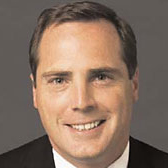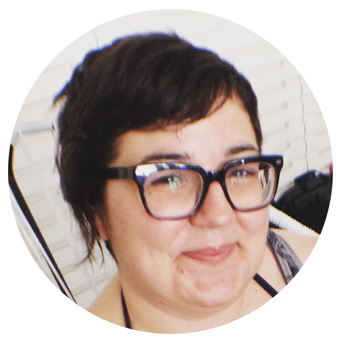
One company has come to own the craft enthusiast publishing space, but most hobbyists probably haven’t heard of it.
F+W, headquartered in Cincinnati with offices in a dozen cities around the globe, has grown from a family-owned magazine publisher to an international force in the craft market. You definitely know its brands—Cloth Paper Scissors, Interweave Crochet, Fons & Porter—but you don’t know its history.
I know it because I worked for F+W myself, from 2007 to 2012. I was an editor for a few magazines, and my Crafty Superstar books were published by North Light, an imprint of F+W. (In the interest of full disclosure: I haven’t done any freelance work for F+W for two years, but I still get royalties for my book.)
With F+W occasionally popping up on crafters’ radars—notably in Abby Glassenberg’s posts on Yarn Fest payments and the Fons & Porter dispute—I thought it was time to write a comprehensive history of the company. I got to speak with the new CEO, Tom Beusse, about where F+W has gone wrong in the past and what he’s going to do to make the company an “ombudsman” in the craft community.
A storied history
F+W’s story began in 1913 as a publisher of magazines for farmers and writers in Cincinnati, Ohio. Until 1999, it was owned by the Rosenthal family, operating out of an old Coca-Cola bottling plant near Xavier University. Richard Rosenthal, the grandson of the founder, became the general manager in 1971, and his wife, Lois, edited Story magazine.
In 1999, the Rosenthals decided to sell the business to focus on charity. That year they announced a large donation to Cincinnati’s Contemporary Arts Center for it to commission a Zaha Hadid building, which now bears their name. More recently, their family foundation made admission to the Cincinnati Art Museum free.
Since 1999, the company has been owned by four different private investment companies. The reported selling price of F+W to Citicorp Venture Capital Group in 1999 was $110 million. In 2002 it changed hands again: Aurelian Communications partnered with Providence Equity Partners to buy the company for $130 million. Then in 2005 ABRY Partners bought F+W for $500 million, though the company later sued Aurelian and Providence, alleging they had inflated revenues.
Each private investment firm would build a new board and install new executives. In 2007 ABRY brought on CEO David Nussbaum, described as a fixer in the publishing business press, and he remained in the position until 2015, after the company’s majority sale to Tinicum LP, another private investment firm, the terms of which were not disclosed.
After the Rosenthals left F+W, the company made a few acquisitions. It bought British craft publisher David and Charles in 2000, Satellite Communications and its Memory Makers scrapbooking brand in 2001, Wisconsin-based Krause Publications in 2002, then Adams Media, a general interest book publisher in 2003, and the Great American Scrapbooking Convention and Scrapbook Retailer magazine in 2006.
In the pre-internet days, publishing was like printing money, but the recession hit F+W hard, and its brands had to adapt to online publishing. Book club sales dropped dramatically, and Borders filed for bankruptcy in 2011. I rode out the recession in the magazine division, where we saw dramatic drops in advertising revenue, which led to dwindling page counts and trimmed editorial and production budgets. Scrapbook Retailer was shut down in 2008, and Memory Makers was shuttered the next year.
Going online was the solution, but it was a brand new path. Magazines rushed to establish more robust web presences and ecommerce stores were created for every interest area (called verticals) in the company. An editorial team can only produce so many books and magazines in a year, so the focus shifted to digital content: videos, ebooks, and PDF downloads. In 2011, Nussbaum told Folio that F+W had seen 50 percent growth in ecommerce from the previous year.

There were growing pains. Acquired companies had layoffs, largely in areas such as administration and production. Getting lean was the name of the game. “People had been laid off without warning after spending their whole careers there because [F+W was] trimming fat,” recalls author Kim Werker, who edited Interweave Crochet from 2006 to 2008 before the company was acquired by F+W. Sometimes acquisitions led to shutting down competing magazines; F+W bought American Woodworker in the New Track Media deal and folded it into Popular Woodworking.
The rush to relaunch every brand’s website led to using a common template for every one of them, even if the functionality didn’t fulfill the community’s needs. A push for revenue led to more and more content being repackaged to sell as downloads.
A former editor at Interweave who asked not to be named said that content experts no longer had autonomy after F+W moved in. “There were so many decisions made based on formulas and not based on the knowledge of the business niche,” she says. Cut budgets made it more difficult to do creative work—“Readers and people in the industry were like, ‘What is going on there?’”—but with the company’s new leadership, “I’m hopeful it will return to being really respected.”
The new CEO
Tom Beusse came to F+W at the start of 2016 from the USA Today Sports Media Group; before that he was CEO of Westwood One and president of the magazine group at Rodale.
He says F+W’s portfolio is about one-third craft focused, and the company as a whole is looking at about $200 million in revenue for 2016. Though he most recently comes from the sports world, he’s intimately familiar with the mind of the enthusiast, and sees F+W as part of a larger ecosystem made up of retailers, manufacturers, customers, and other publishers in the craft enthusiast space. “I don’t think you can be an island in a special interest community,” he says. He imagines F+W as a potential ombudsman that facilitates interactions. “We’re going to take our membership in the ecosystem really seriously.”
The first order of business is to fix the online presences of the company. “The websites aren’t what they should be, so we’re transforming all of them,” Beusse says. And while the company is transforming its online outlets, he’s also transforming the teams themselves. Historically, books operated separately from magazines, and ecommerce was another division. His goal is to bring together everyone in a vertical, such as crochet, overseen by a content strategist to guide the vision.
Giving autonomy to division leaders has started with bringing back John Bolton as general manager of Interweave. Bolton was an early employee of Quilting Arts, a magazine founded in 2000 which Interweave acquired in 2007. He left the company in 2013 after F+W bought it. But his former coworkers remembered him: “The day I brought him in, he got a standing ovation,” Beusse says. And when Yarn Fest payment terms drew ire from the craft community, Bolton addressed the problem directly.

“Whether you’re a writer or an artist, painter, knitter, or quilter, nobody at this company from here on out is going to get a contract snuck past them,” Beusse says. “We’re going to be straightforward, and tell them that we reuse their content globally, even if we have to pay more to gain those rights in certain instances.”
He’s asking editorial teams to re-envision how they do their work. Interacting with consumers once a month with a print magazine no longer works—editors need to interact with fans in whatever methods they prefer on a daily basis. “Pure and simple quality is the best audience development tool. What we’re doing is upgrading quality on every single platform,” Beusse says, and that is going to come with strategic budget increases.
“Over the last few years, F+W didn’t have an idea of how to increase revenue, so they shrunk costs,” Beusse says. Being afraid to fail brought the company down. “We think there’s an opportunity to grow revenue big time. And it starts with quality and paying attention to what the customer wants.”

Grace Dobush
contributor

Frankly, as an artist who wrote numerous articles for Quilting Arts over the years, I am disgusted with F&W’s low-quality. Once they acquired the magazine, they cheapened the paper and made a hash of the articles, including one I wrote. They sliced/diced/and cut it so it was completely unrecognizable from the original. They put photos in the wrong places and somehow, a sentence from the article became a caption. I vowed never to write for an F&W publication again and indeed, I have not. I am not the only professional who has had this experience, and many people I know have unsubscribed from publications they have acquired. Profit at the expense of quality. Bah.
Quick correction — Pokey Bolton founded Quilting Arts (and Cloth, Paper, Scissors and QuiltingArts TV). John joined Quilting Arts later. After they sold Quilting Arts to Interweave, they both worked there for a while. Pokey left before John did and now runs CraftingaLifeLLC.com in Napa, California.
Thank you, Martha.
I have to say that I think John Bolton is a wonderful person and I’m so happy he’s back. So many publishers won’t negotiate a contract and summarily dismiss the authors concerns. He’s not one of these people. I have a great deal of respect for him (and I spent my career in publishing!) Having many owners over a short period of time is bound to disrupt any business and the emphasis on short term profits has been going on for decades and is never a strategy for long term growth. I too, have discontinued my subscription to Quilting Arts because I felt they were not bring new and interesting artists to the magazine, just relying to the same-old, same-old tired voices. No one knows how print and digital delivery of content will develop in the future but for me, having a physical newspaper/magazine in hand is one of my daily joys … even though our son gets all his information on his phone.
Well said Carol!
John Bolton did NOT found Quilting Arts magazine. His then-wife, Pokey Bolton, founded it. He was hired by her. They were both at the helm when Quilting Arts and Cloth, Paper, Scissors were acquired by Interweave. Pokey now owns and operates Crafting A Life, LLC.
Thanks for pointing that out! I’ve asked Abby to update the story to reflect that correction.
I just read this article. Thank you, Leslie.